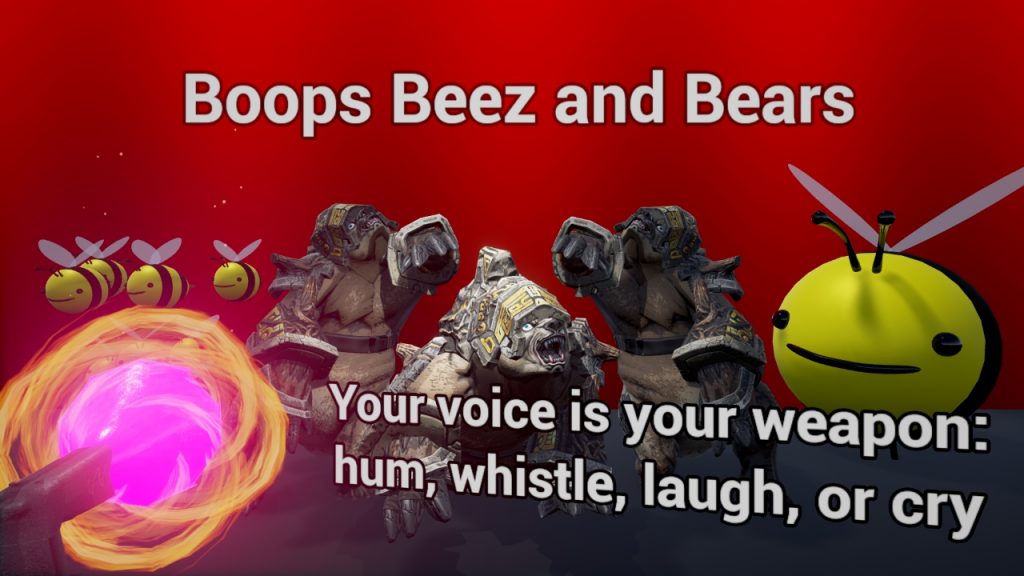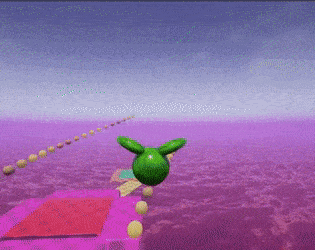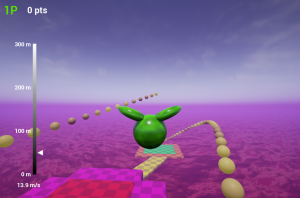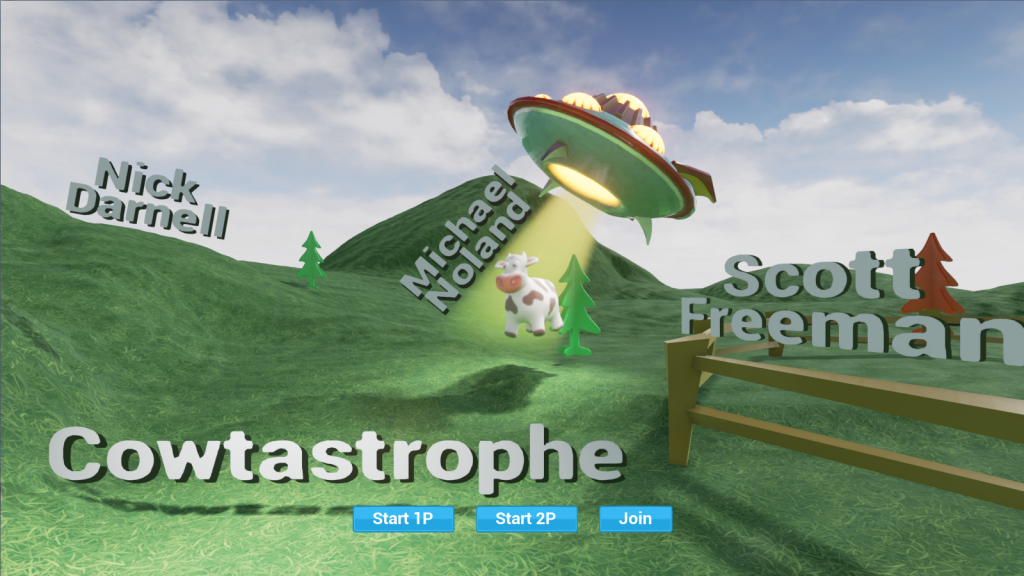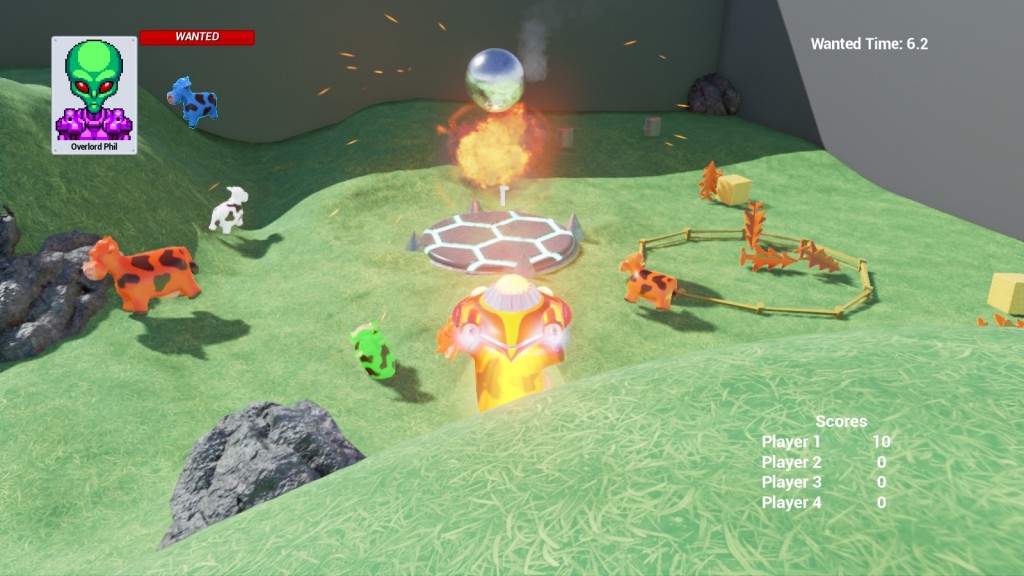The music is having a tantrum and can’t decide how fast to play. You move with the tempo, as do the enemies. Watch out for environmental objects like spike blocks, they don’t have ears and will keep moving regardless, so don’t get caught in their tracks when the music stops.
Download from itch.io and give it a go. Here’s how to play:
- Two players (or one ambidextrous player) race to the end point.
- Don’t move when the music has slowed down, and avoid anything red.
- Collect coins to raise your score.
- WASD moves player 1 (green)
- IJKL moves player 2 (blue)
The theme for the 2017 Train Jam was ‘unexpected anticipation’, which was pretty challenging to work with. The first thing that came to mind was Johann Sebastian Joust, which fits perfectly but already exists. We bounced some ideas back and forth and ended up wanting to do something similar to Joust or musical chairs with stop and go gameplay, leaving you anticipating needing to stop but not knowing exactly when. The environmental enemies give a nice risk-reward mechanic, do you try to cross their paths and hope you don’t get stuck, or do you go the long way around?
Jammers:
- Alex Paschall (@UnrealAlexander)
- Andrew McTeer
- Jacob Koonce (@Kooncelot)
- Joseph Azzam (@JosephRAzzam)
- Michael Noland (@joatski)
Additional assets:
- Used the character model and animations from the free Couch Knights sample, which is licensed for use only with Unreal Engine based products
